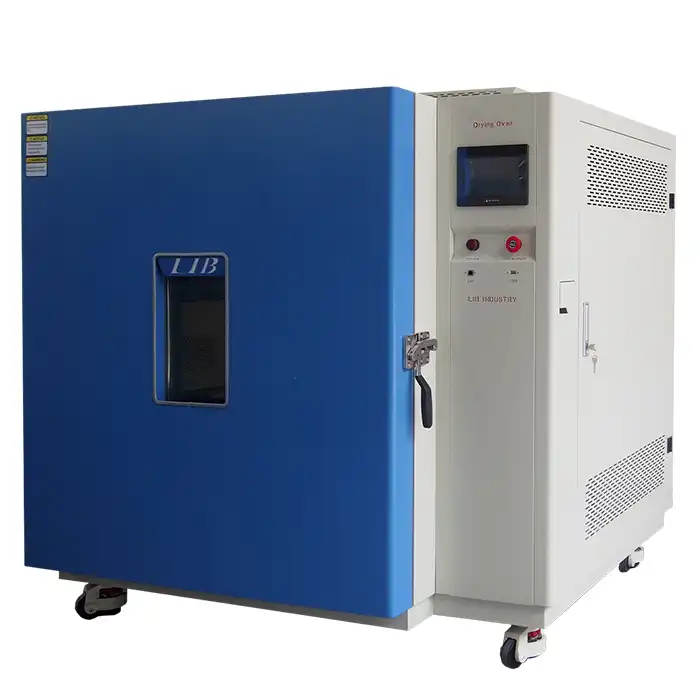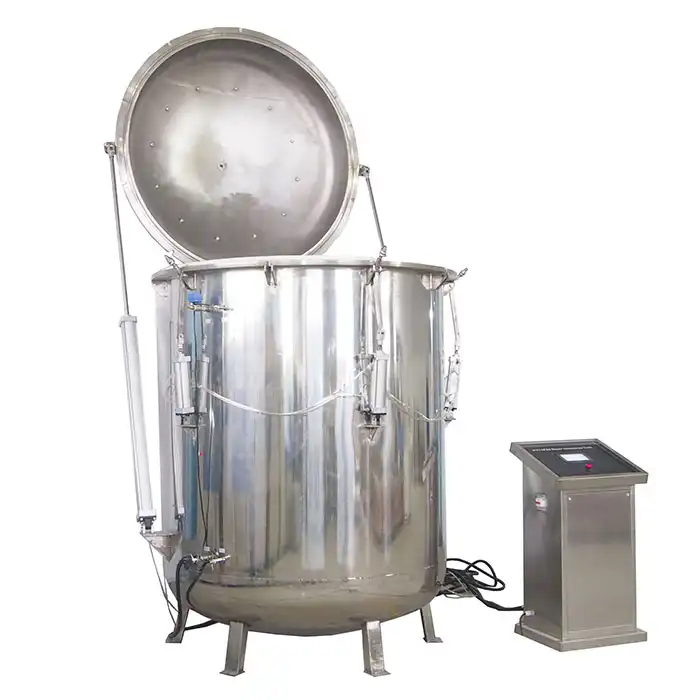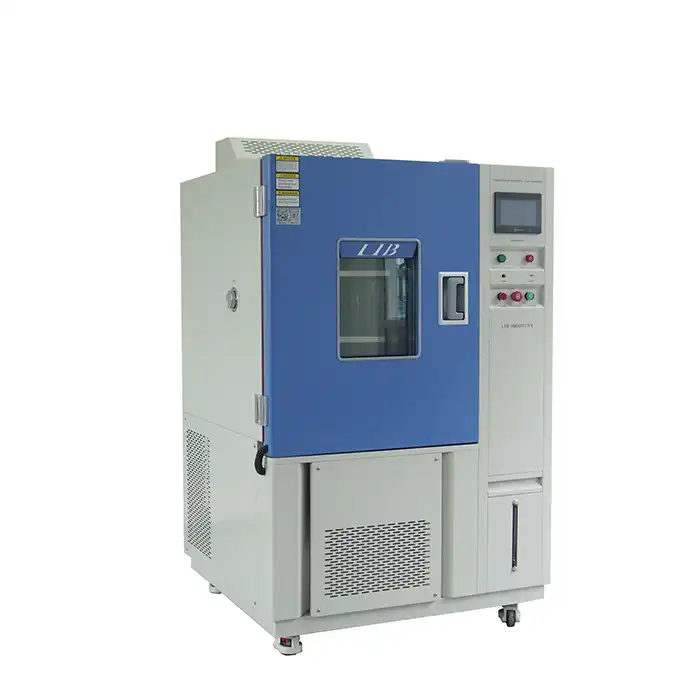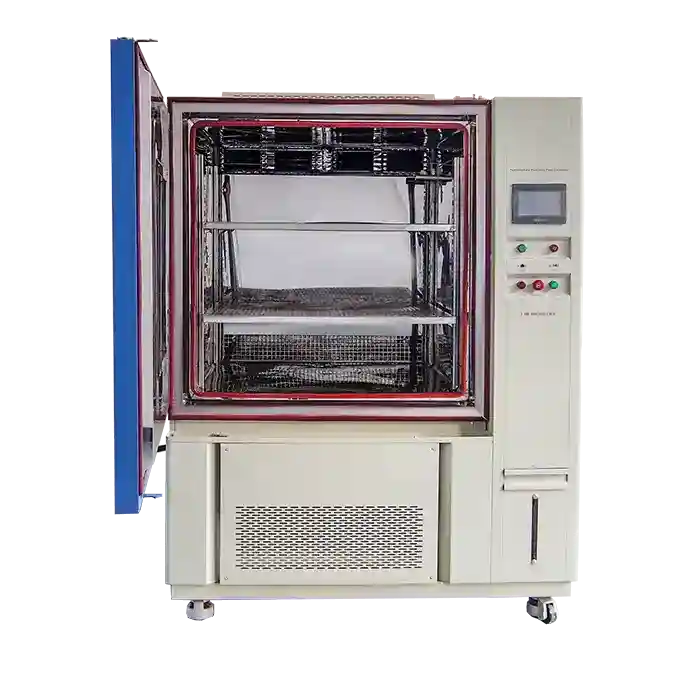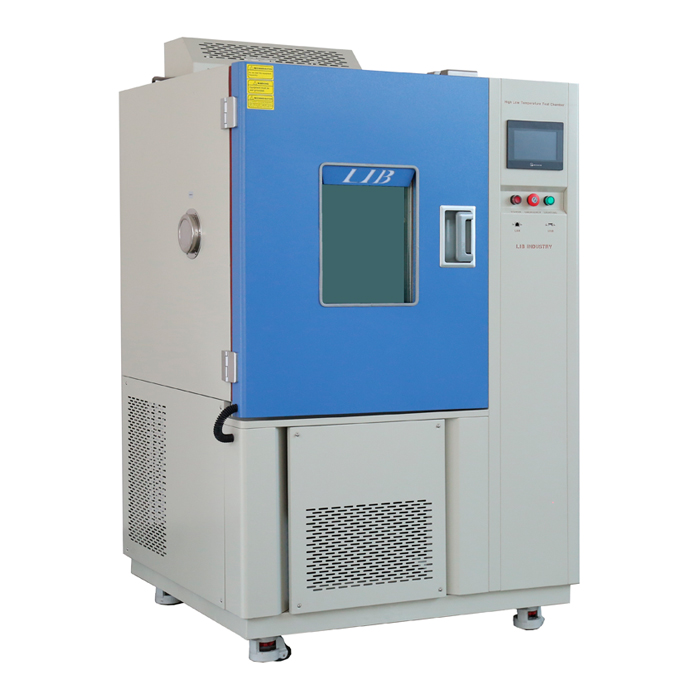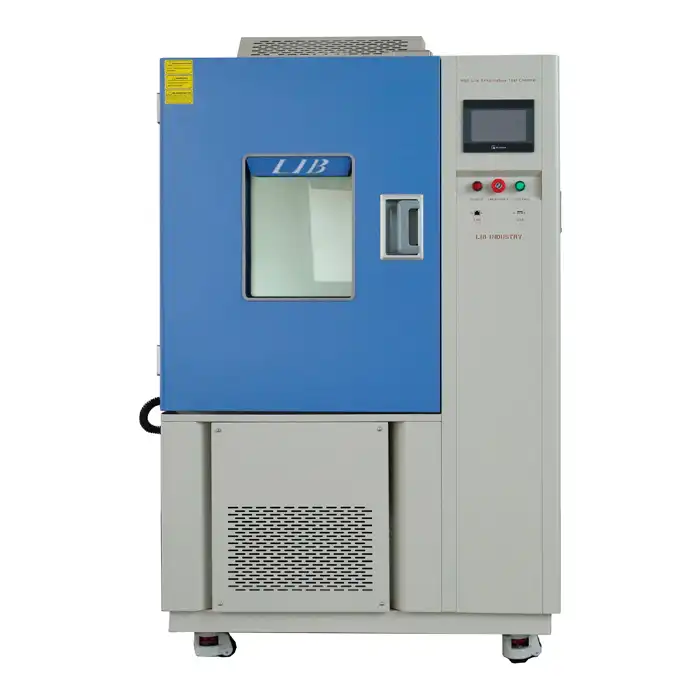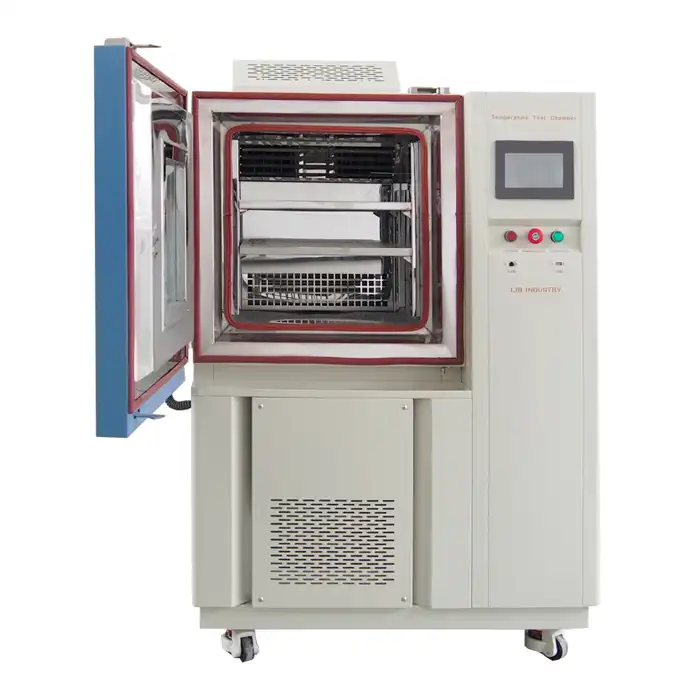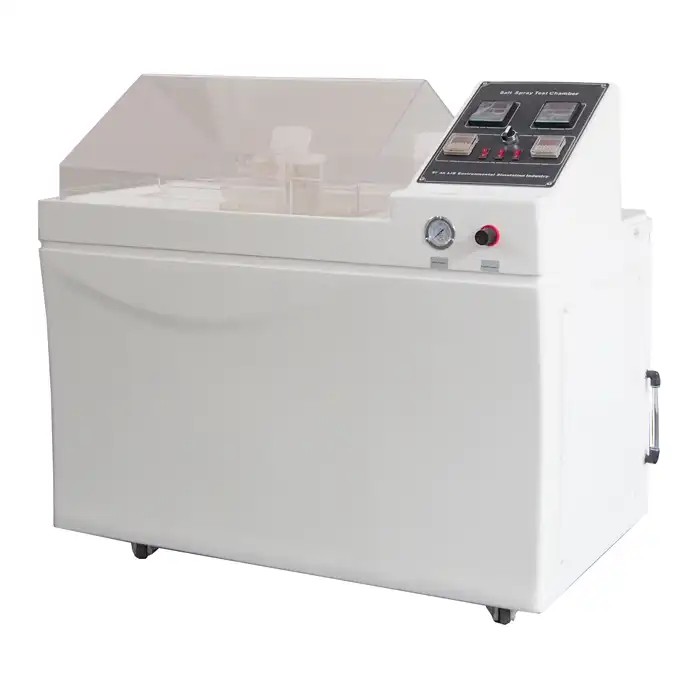how does a humidity chamber work?
Introduction
A humidity chamber, also known as a humidity test chamber or climatic chamber, is an essential tool used in various industries to simulate specific environmental conditions. These chambers are designed to control temperature and humidity levels, allowing researchers and manufacturers to assess the impact of these conditions on different materials, components, and products.A humidity calibration chamber is a specialized device used to accurately calibrate and verify humidity sensors and instruments. In this blog, we will delve into the workings of a humidity chamber, explore its importance, and answer some common questions associated with its use.
What Is the Principle Behind a Humidity Chamber?
Humidity chambers operate on the basic principle of controlling and maintaining a consistent environment within a closed space. These chambers are equipped with various components that work together to achieve the desired temperature and humidity levels. The main components include a refrigeration system, a heating system, a humidity generation system, and a control system.
The refrigeration system is responsible for cooling the air inside the chamber. It typically uses a compressor, condenser, and evaporator to remove heat from the air. The heating system, on the other hand, increases the temperature inside the chamber when needed. It usually consists of electric heaters or other heating elements.
The humidity generation system is crucial for maintaining the desired humidity levels. This system can generate humidity through various methods, such as steam injection, ultrasonic humidification, or spray nozzles. The control system, which includes sensors and controllers, monitors and adjusts the temperature and humidity levels to ensure they remain within the specified range.
The combination of these systems allows the humidity chamber to create a stable environment, enabling accurate testing and analysis of how different materials and products respond to specific climatic conditions.The temperature humidity calibration chamber provides a controlled environment where humidity levels can be precisely adjusted and maintained, allowing for the calibration of sensors across various humidity ranges.
How Does a Humidity Chamber Control Temperature and Humidity?
Controlling temperature and humidity within a chamber involves a series of steps and precise mechanisms. The process begins with the sensors, which continuously monitor the internal conditions of the chamber. These sensors send real-time data to the control system, which processes the information and makes necessary adjustments to maintain the desired environment.
For temperature control, the system uses a combination of heating and cooling elements. If the temperature inside the chamber drops below the set point, the heating system is activated to raise the temperature. Conversely, if the temperature exceeds the set point, the refrigeration system kicks in to lower it.
Humidity control is achieved through the humidity generation system. If the humidity level inside the chamber falls below the desired range, the system generates moisture using steam or ultrasonic methods. On the other hand, if the humidity level exceeds the set range, the system can use dehumidifiers or cooling mechanisms to remove excess moisture from the air.
The control system is equipped with advanced algorithms and feedback mechanisms to ensure precise adjustments. This system can respond to fluctuations in temperature and humidity quickly, maintaining a stable environment for testing purposes. By controlling these parameters accurately, humidity chambers provide reliable and repeatable results, essential for research and quality control.
Why Are Humidity Chambers Important in Various Industries?
Humidity chambers play a crucial role in multiple industries, providing valuable insights into how products and materials respond to different environmental conditions. The humidity calibration chamber plays a critical role in maintaining the accuracy and performance of humidity sensing devices across various industries and applications.Here are a few examples of their importance across various sectors:
Electronics Industry: Electronic components are highly sensitive to temperature and humidity. Humidity chambers are used to test the durability and reliability of these components under different climatic conditions. This helps manufacturers identify potential issues and improve the quality and performance of their products.
Pharmaceutical Industry: In the pharmaceutical industry, stability testing of drugs and medical products is essential. Humidity chambers allow researchers to simulate different storage conditions and assess the shelf life and efficacy of these products over time. This ensures that pharmaceuticals remain safe and effective throughout their intended use.
Automotive Industry: Automotive parts, such as rubber seals, plastic components, and electronic systems, must withstand various environmental conditions. Humidity chambers help manufacturers test these parts for durability and performance, ensuring they meet safety standards and customer expectations.
Aerospace Industry: In aerospace, materials and components are exposed to extreme conditions during flight. Humidity chambers are used to test resistance to thermal cycling, moisture ingress, and other environmental stresses, ensuring the reliability and safety of aerospace products.
Food and Beverage Industry: The food and beverage industry uses humidity chambers to test packaging materials and the shelf life of products. By simulating different storage conditions, manufacturers can ensure the quality and safety of their products from production to consumption.
Textile Industry: Textile manufacturers use humidity chambers to test the durability and performance of fabrics under various environmental conditions. This helps in developing materials that are resistant to wear and tear, ensuring high-quality products for consumers.
What Are the Types of Humidity Chambers Available?
There are several types of humidity chambers, each designed for specific applications and testing requirements. Here are some common types:
Benchtop Humidity Chambers: These are small, compact chambers designed for laboratory use. They are ideal for testing small samples and are often used in research and development settings. Benchtop chambers offer precise control over temperature and humidity, making them suitable for various scientific experiments.
Walk-in Humidity Chambers: These large chambers are designed to accommodate larger samples or multiple items at once. They are commonly used in industries such as automotive, aerospace, and electronics, where large-scale testing is required. Walk-in chambers provide ample space for conducting extensive tests and evaluations.
Reach-in Humidity Chambers: Reach-in chambers are mid-sized units that offer a balance between benchtop and walk-in chambers. They are suitable for testing medium-sized samples and are often used in quality control and production environments. Reach-in chambers provide easy access to the test samples while maintaining precise control over the environmental conditions.
Temperature and Humidity Cycling Chambers: These chambers are designed to simulate rapid changes in temperature and humidity. They are used to test the effects of thermal cycling and humidity fluctuations on materials and products. These chambers are essential for industries where products are exposed to varying environmental conditions, such as automotive and aerospace.
Customized Humidity Chambers: Customized chambers are built to meet specific testing requirements. Manufacturers can design chambers with unique features and capabilities to accommodate specialized testing needs. Customized chambers are often used in advanced research and development projects.
Each type of humidity chamber offers unique features and benefits, allowing industries to choose the most suitable option for their testing requirements. Whether for small-scale laboratory experiments or large-scale industrial testing, there is a humidity chamber available to meet the needs of various applications.
How to Maintain and Calibrate a Humidity Chamber?
Maintaining and calibrating a humidity chamber is essential to ensure accurate and reliable results. Regular maintenance and calibration help in identifying potential issues and keeping the chamber in optimal working condition. Here are some steps to maintain and calibrate a humidity chamber:
Regular Cleaning: Keep the chamber clean and free from dust and debris. Regularly clean the interior surfaces, sensors, and components to prevent contamination and ensure accurate readings.
Inspect Components: Regularly inspect the heating and cooling systems, humidity generation system, and control system for any signs of wear or damage. Replace any faulty components to maintain the chamber's performance.
Calibrate Sensors: Calibrate the temperature and humidity sensors periodically to ensure accurate measurements. Use calibrated reference instruments to verify the readings and make necessary adjustments to the sensors.The humidity chamber calibration procedure involves a series of systematic steps to ensure the accuracy and reliability of humidity chambers used for calibrating sensors and instruments.
Check Seals and Gaskets: Inspect the seals and gaskets for any signs of wear or damage. Ensure that the chamber doors close tightly to maintain a stable environment.
Monitor Performance: Continuously monitor the performance of the chamber during testing. Keep track of any deviations in temperature and humidity levels and address any issues promptly.
Follow Manufacturer Guidelines: Adhere to the manufacturer's guidelines for maintenance and calibration. Follow the recommended schedule for servicing and calibration to ensure the chamber operates efficiently.
By following these steps, users can maintain the accuracy and reliability of their humidity chambers, ensuring consistent and reliable testing results.
Conclusion
Humidity chambers are indispensable tools in various industries, providing valuable insights into how products and materials respond to different environmental conditions. Understanding how these chambers work, their importance, and the different types available can help industries choose the right equipment for their testing needs. Proper maintenance and calibration of humidity chambers are crucial to ensure accurate and reliable results, contributing to the development of high-quality, durable products.The humidity calibration chamber typically uses advanced technology to generate and control humidity levels, ensuring high accuracy and reliability in sensor calibration.
References
1.Thermo Fisher Scientific
2.Weiss Technik
3.CSZ Industrial
4.Espec North America
5.Russells Technical Products
6.Hastest Solutions
7.Cincinnati Sub-Zero
8.Tenney Environmental
9.Memmert
10.Angelantoni Test Technologies



